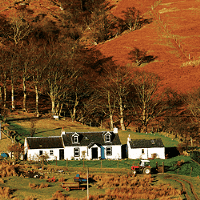Although the contribution from agricultural assets has fallen, together with residential they still provide two thirds of the average estate’s income.
Most estates have a number of other income sources including woodland, shooting, minerals and, in many cases, leisure and commercial trading enterprises. The character and value of these additional income sources is often dependent on location. Notably on their own these ‘alternative’ income streams can be demonstrated to be very volatile, however as a portfolio the total income derived from them continues to grow.
These opportunities have given estates steady positive income growth over the long term. This is in stark contrast to single farm enterprises where exposure to price, exchange rates and weather volatility has created significant swings in financial results from one year to another.
Rural estates remain the foundation of many rural communities, employing and housing specialist in-house tradesmen and also contracting-out to local businesses. Our research demonstrates that, on average over the past five years, over 70% of repairs are undertaken by in-house staff with the remainder undertaken by local builders.
Up to £50,000 is paid to local contractors, from an average estate spend on property repairs of over £150,000 per annum. In addition, on the average estate, around 30% (up to 20 houses) are provided, rent free to staff and former employees. The balance of housing stock (over 200 houses on some estates) is let to local families in the rural community.
The results demonstrate that long-term retention of the business remains the overriding key objective of the owners, providing neighbouring communities and businesses with a stable platform allowing third parties to make assured investments into their own businesses.
Ranked in order, owners’ objectives are:
1. long-term retention of the core estate
2. income generation
3. return on capital
4. environmental stewardship.
Agricultural Assets
The increasing diversity is a result of the changing structure of estates, both in the agricultural and residential sectors. Our research shows that there has been a shift from let, notably traditional tenancies, to in-hand farming (including the use of contract farming agreements).
This shift is in part driven by tenants renouncing their tenancies and part by landlords’ anxiety to let land, in the shadow of the uncertainty generated by Land Reform legislation.
Figure 2 shows that over the past five years the area occupied on the average estate by traditional tenancies has fallen from 44% to 22% of the lowland area. Conversely, the area occupied by in hand farming enterprises has increased from 15% to 43%. In addition, land let on modern tenancies has dropped from 41% to 35% - a depressing consequence of the land reform process.
Our survey records average agricultural rents in 2016 as:
- Traditional Tenancy: £65 per acre, up 4.0% on 2015
- Limited Duration Tenancy (LDT): £93 per acre, up 7.3% on 2015
- Short Limited Duration Tenancy (SLDT): £67 per acre, up 14% on 2015
- By comparison, the average Farm Business Tenancy (FBT) across England in 2016 was £118 per acre, up 2.2% on 2015 and on Traditional tenancies £84, up 4.9% on 2015.
Our research indicates that the average net income (after deduction of property repairs, insurance, third party rents and interest on borrowed working capital) recorded for in-hand farming, including contract farming, enterprises over the past five years was around £30 per acre. It ranged from -£26 per acre to £80 per acre as incomes were exposed to input and output volatility.
Reviewing the results of our rents survey demonstrates that SLDTs are most closely linked to commodity prices and productivity. It would also indicate that rents on traditional tenancies are closing the gap on modern tenancies.
It will be interesting to observe the impact of the Land Reform legislation on rental levels. The results also demonstrate the volatility of in-hand and contract farming; both are critically exposed to commodity prices and ongoing delays to subsidy payments.
.png)
.png)
.png)
.png)
.png)
